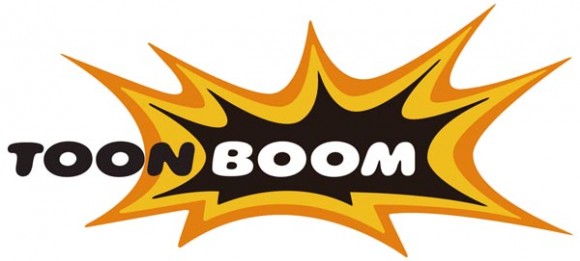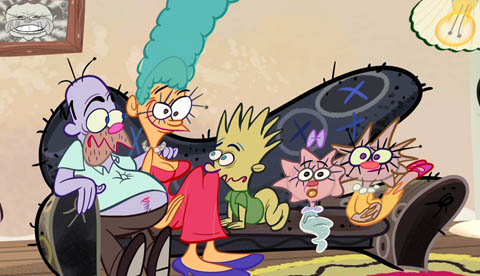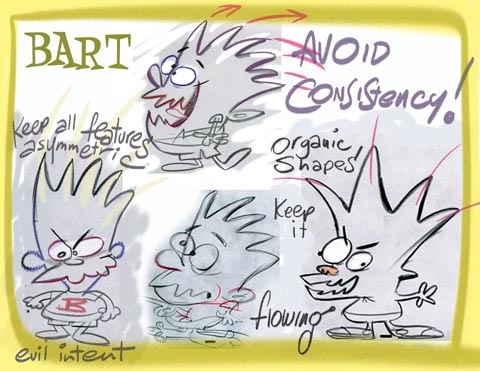
Animators have more options for hand-drawn software than ever before, a fact that is reflected daily in the projects we feature on the site. For example, the short Junkyard was produced with TVPaint, the TV series Sarah and Duck was made with CelAction2D, and Disney’s new Mickey Mouse shorts are animated in ToonBoom Harmony. Of course, there’s the ubiquitous Adobe Flash which is still the most widely used 2D animation tool, though its influence has been waning in recent years.
Part of the reason that Flash has been losing marketshare in the U.S. and Canada is due to ToonBoom’s Animate line of software, which is considered by many to be an affordable alternative with better workflow and a superior set of tools for vector-based 2D animation. The company recently announced the pre-launch of Animate 3 and Animate Pro 3, which adds some much desired features like the ability to taper pencil vector lines, draw with textures and output in 64-bit high-resolution. Many of these features were previously available only in ToonBoom’s much higher priced Harmony software.
Here are some of the new features announced by ToonBoom:
Toon Boom Animate 3 highlights:
- True Pencil: Animate 3 gives you the ability to draw with True Pencil, a pencil line with variable thickness that supports pressure sensitivity. Draw clean lines with the pencil and have the ability to modify the lines easily. You can apply the style across hundreds of drawings. Incorporate texture on your lines for cool effects.
Texture Brushes: Animate allows you to draw with texture brushes using the Brush tool. Take advantage of this to do rough drawings just like you would on paper, simulating that pencil-on-paper feeling.
Tool Presets Toolbar: When creating paperless animation, you often want to save frequently used brushes or pencils so you can quickly go back to those preferences. Using the new Tool Presets toolbar, you can save presets for any tool, remembering the properties of that tool.
Toon Boom Animate Pro 3 highlights:
- Bone Deform: Animate Pro 3 now comes with Bone-style Deform! Bring your cut-out characters to the next level by adding deformers to bend drawings around bones and articulations. Apply deform to vector drawings, textures, or imported bitmaps.
True Pencil: Animate Pro 3 gives you the ability to draw with True Pencil, a pencil line with variable thickness that supports pressure sensitivity. Draw clean lines with the pencil and have the ability to modify the lines easily. Incorporate texture on your lines for cool effects.
Tool Presets Toolbar: When working in cut-out animation, you often want to save standard brush or pencil settings for different areas of your character rig. Using the new Tool Presets toolbar, you can save presets for any tool, remembering the properties of that tool.
Both products are now supercharged on a 64-bit core. This gives you the freedom to use more of the computer’s resources, and output high-resolution files for a professional-quality production. In addition, they both support standard two-finger Touch Gestures for zooming, rotating, and scaling of the canvas, when using a tablet. Finally, they both benefit from interface enhancements designed to simplify workflow and streamline the animation process.
Pricing and Availability: During this time-limited pre-launch period, you can buy Toon Boom Animate 3 for $599 US and Toon Boom Animate Pro 3 for $999 US – a saving of $100 US. Customers will receive a version 2 license which will be replaced by version 3 upon release. Customers owning previous versions of Animate and Animate Pro may upgrade on release day only.
To learn more and pre-order the software, visit ToonBoom’s website.
Ren and Stimpy creator (and my former boss) John Kricfalusi made this 3-minute commercial for Stussy to advertise four new T-shirt designs he created for them. John talks production process on his blog.
Cartoon Brew |
Permalink |
No comment |
Post tags: John K, John Kricfalusi, Stussy, Toonboom

Last year, The Simpsons commissioned an opening couch gag from British street artist Banksy that contained a cockeyed look at the working conditions of overseas animators. This year, which marks the show’s remarkable 23rd season, the producers of the mustard-family went a step further and debuted a new couch gag last night by Ren and Stimpy creator John Kricfalusi.
Banksy mocked the idea of mass-produced corporate art, but his message was muddled because it was made using the same system he was satirizing. There’s no such confusion in John’s approach, which he produced on his own. John’s opening is, in fact, far more subversive because he focuses almost exclusively on making a pictorial statement, relegating the show’s dominant literary elements to the back seat. In 35 short and sweet seconds, he liberates the animation of The Simpsons from years of graphic banality. The visual look of the show, which has been so carefully controlled by its producers, becomes a giddy and unrestrained playground for graphic play, and the balance of creative authority is shifted from the writers’ room to the animators in one fell swoop. Now that’s revolutionary.
On a personal note, I worked on the revival of Ren and Stimpy nearly ten years ago, and artistically, this is not the same John Kricfalusi that I remember from that time. Like any painter or filmmaker worth their salt, John doesn’t stay still, constantly evolving, growing, experimenting, and challenging audiences with new graphic concepts. He continues to be, in my book, one of the most exciting and influential artists working in animation today. Whether everything works perfectly in this opening is besides the point. As John says in our interview, “The day I make a perfect cartoon is the day I’ve run out of creativity.”
In our interview, we talk about how the opening came about, Matt Groening’s reaction to it, how his style has evolved in recent years, and his switch from Flash to Toon Boom. (Note: This is an edited version of an interview that was conducted via email this past weekend. Click on any of the images for a larger version.)
Question: First things first, how did you end up animating an opening for The Simpsons?
John Kricfalusi: Matt Groening and Al Jean [executive producer] asked me to do it. They showed me an opening that Banksy did that satirized the animation production assembly line system in Korea and told me it was really popular, so they wanted to do something similar with me.
At first they just wanted me to do a storyboard and have their regular crew animate it. If we had done it that way, no one would even have known that I had anything to do with it because it would have ended up on model and all pose to pose. I showed them the Adult Swim shorts I had been doing and pointed out that the way things happened was even more important than what was happening in my work. You can’t write visual performance. You have to actually draw it.
This project was the most fun I’ve had in years. It has really hammered home (to me) the importance of animation in animation. I think it’s possible to bring animation back to this country and make the core of it fun again, not be a mere tertiary addition to some high concept or executive’s “vision.” The pure act of animating is the most fun part of animation. I am so grateful to Matt for letting me have some real fun this summer.






